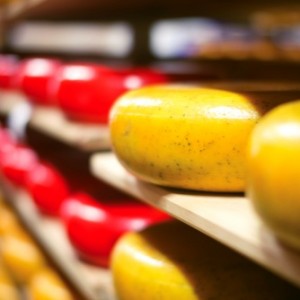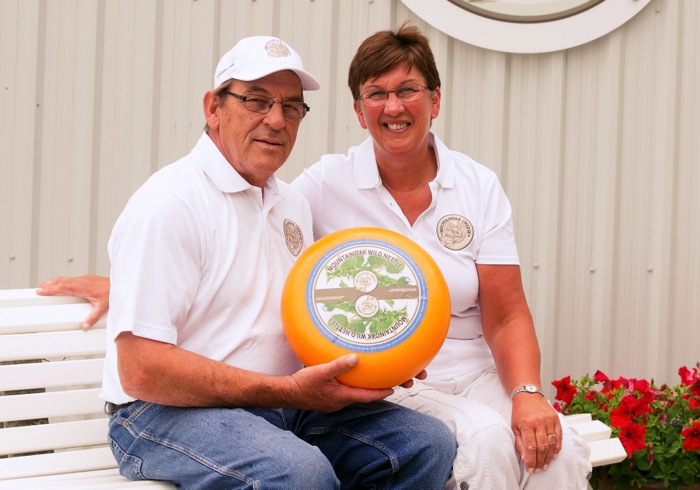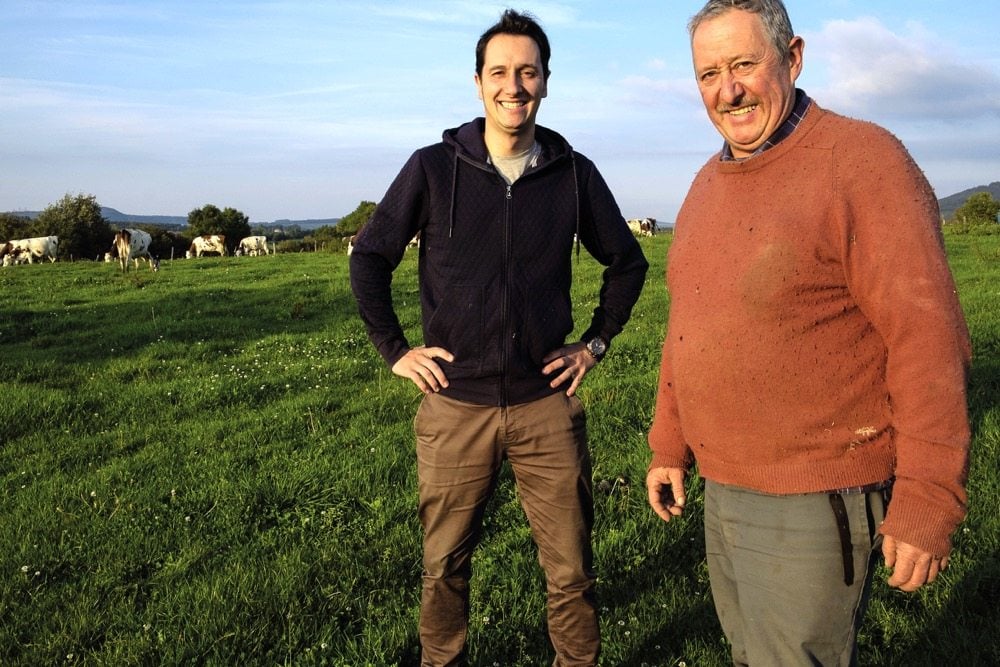Two years after he began making cheese commercially on his New Hamburg, Ont. dairy farm, Adam van Bergeijk admits he is pleased with their progress. “We’re close to our targets,” he says.
But van Bergeijk also admits it’s been a long haul to get to this point.
About 25 per cent of the milk from their 180-cow Holstein dairy operation is used to make Gouda-style cheese. The cheese is sold through a distributor to 250 stores including Sobeys, Loblaws, Zehrs, Foodland, Farm Boy and Metro, as well as several specialty shops.
Read Also

The big squeeze: How to be fair to siblings during farm succession
Managing sibling business relationships on family farms.
The van Bergeijks also operate a store at the farm which is open Fridays and Saturdays.
Making cheese isn’t new for Adam and his wife, Hannie. They have a long history of making award-winning Gouda cheese on their farm in the Netherlands. Both had trained at the Gouda Cheese Making School in the city of Gouda in 1981.
When they immigrated to Canada in 1996 with their three teenaged children, van Bergeijk continued making cheese, but only for their own personal consumption. Although in the Netherlands it was common to sell farmstead cheese, the rules here made that difficult.
That changed, however, when the Dairy Farmers of Ontario introduced its Artisan Dairy Program to encourage small-scale makers of traditional dairy products, and van Bergeijk saw his opportunity.
The hardest part was getting the cheese plant built, says van Bergeijk. It took four years, with the red tape proving a big stumbling block. The Ontario Ag Ministry approved the plan for the state-of-the-art cheese plant but van Bergeijk was not able to obtain a federal licence.
“The Canadian Food Inspection Agency (CFIA) wasn’t interested in working with us,” he says. As a result, he is not permitted to sell his cheese to other provinces. “The rules are difficult to explain to the public,” says van Bergeijk, who also had to satisfy DFO regulations, although by the end of the project, he was impressed with the support he got both from DFO and from Dairy Farmers of Canada.
- More Country Guide: Two steps forward, The Cheesiry is born
Getting the building permit approved at the township level was also a long and involved process, adds van Bergeijk.

As well, there were unforeseen construction costs that made the project go over budget, and a big learning curve for the contractors who weren’t familiar with the equipment which had been purchased from the Netherlands.
“It’s all sorted out now,” says van Bergeijk who is happily making cheese three times a week, about 400 kg at a time.
Fresh milk from the barn goes directly by pipeline to a 4,000-litre tank in the cheese plant in a separate building where it is sampled for quality standards.
“We are the only ones in the province who use milk directly to make cheese,” says van Bergeijk. Using warm milk, he says, keeps more of the flavours.
The van Bergeijks focus on making a natural cheese from unpasteurized milk with no additives.
Cheese-making is a combination of art and science, and for those interested in the cheese-making process, there is a detailed slide show on the MountainOak Cheese website.
Since the cheese is made from unpasteurized milk, it must be aged for a minimum of 60 days, and each cheese is given a unique number so it can be traced — there are now more than 3,000 cheese wheels in storage which must be turned daily.
So far the family makes 14 different types of Gouda-style cheese, all sold under the MountainOak name. There are four plain cheeses: mild, medium, aged (aged nine months) and Gold (aged 15 months). There are also several flavoured cheeses including wild nettle, chili pepper, black pepper, cumin, Friesian (cumin and cloves), mustard, fennugreek, pumpkin seed and black truffle.
“It is very important to get the right balance of spices,” says van Bergeijk. “Too much and it will overpower the taste of the cheese.” He makes small batches of new flavours which he tries out on friends and family. He also monitors how well the different cheeses are selling.
Already the quality of MountainOak cheese has been recognized with two awards. The aged Gouda won first place at the British Empire Cheese Show in Belleville and the Gold cheese won second place at the Canadian Cheese Awards.
While getting the cheese plant up and running was the biggest hurdle, marketing has also been a bigger job than expected. It takes a sustained effort to create awareness of their cheeses and to have people remember them, explains Hannie. So far this year they have done more than 40 demonstrations in grocery stores and at food events. They have a team of eight people trained in proper food-handling procedures to do cheese demonstrations. To help them manage the onerous job of marketing, van Bergeijk hired a marketing manager who works almost full time organizing demonstrations and shipments.
The milk used for cheese making must first be sold to the milk board. Then the van Bergeijks buy it back from the board at a 10 cent per litre premium. (Van Bergeijk says he hopes to negotiate a better price in the future.)
Van Bergeijk is also concerned about the impact of the CETA European trade deal which will allow more subsidized European cheese into Canada. While he says he can compete on quality, he cannot compete on price with subsidized European cheese.
To that end they are trying to encourage consumers (including other farmers) to support local farmers. “This is a Dutch-style cheese made from Canadian milk,” he says.
Van Bergeijk figures if we can make it here, why should we import it? The cheese plant creates jobs and contributes to the local economy.
In a typical week, Adam spends about 75 per cent of his time working in the cheese side of the operation and about 25 per cent still helping out with the farm which is managed by his youngest son, Arjo and his wife, Baukje. They also have three full-time staff, besides Adam, working in the cheese plant, as well as two part-time staff who work in the store along with Baukje and Hannie.
Another son, John, and his wife, Angela, have a dairy farm just a few kilometres down the road. A daughter, Liesbeth, has a dairy farm with her husband, Peter de Boer, near Tillsonburg. In total, Adam and Hannie have nine grandchildren.
Developing a value-added business isn’t for everyone, says Adam. It takes someone with an adventurous spirit, says Hannie. And, adds Arjo, “someone who doesn’t give up.”
Van Bergeijk agrees. “When there is a roadblock you have to think, how am I going to manage it so I can get to my goal?”
















